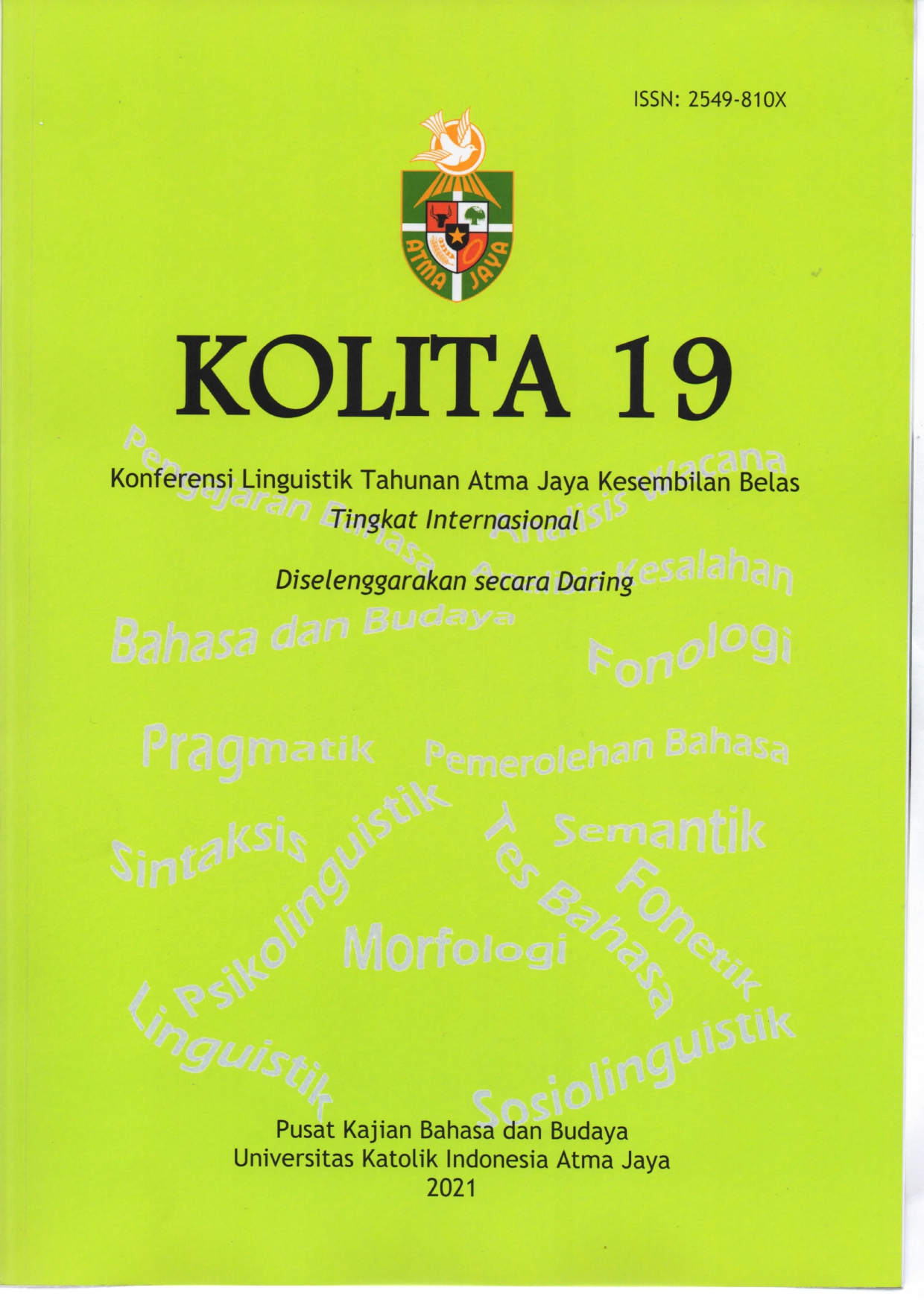THE EFFECTIVENESS OF AUTHENTIC MATERIALS IN PROMOTING EFL STUDENTS' GRAMMATICAL COLLOCATION COMPETENCE
Keywords:
Effectiveness, authentic materials, grammatical collocationAbstract
We all are well informed about vocabularies being the most important part in using a language, owing to the fact that messages cannot be passed on when people lack vocabulary knowledge. Nonetheless, correct grammaticality plays substantial role especially in writing, for it is to avoid puzzlement towards the intended meaning. Similarly, incorrect application of grammatical collocations may lead to misunderstanding. The grammatical collocation of interested in, for example, cannot be simply replaced by *interested with, since words occur together to make collocational patterns, as suggested by Hank (1987). To put it differently, the combinations of words are not random, but rather somewhat fixed. Collocations are quite troublesome mainly for EFL learners. According to Farghal & Obeidat (1995), the main source of collocational errors come from L1 interference, interlingual or intralingual transfer, lack of grammatical collocation knowledge, and overgeneralization. This study focuses on how significant authentic materials like news articles may develop EFL students’ competence of grammatical collocations. The participants are students coming from English department in Bunda Mulia university. There were two tests to find out the students’ competence: (1) pre-test, and (2) post-test. The test items were grammatical collocations used in the English news articles. As suggested by Benson, Benson, & Ilson (2009), grammatical collocations are categorized into 8 major combinations. However, this study is limited to only three-word combinations: (1) noun + preposition, (2) preposition + noun, and (3) adjective + preposition. The pre-test was administered before the treatment was given to see how well the students cope with the grammatical collocations, while the post-test was later administered after the students were given treatment, in which the students were given only 3 news articles. The pre-test was in the form of multiple choices, where they were expected to recognize the collocations. The post-test, however, was in the form of producing the collocations. The writer compared the pre- and post-tests of grammatical collocations and found out that the authentic materials did not contribute to the students’ awareness of the use of grammatical collocations in the post-test, as this was shown in the mean of the post-test being lower than that of the pre-test. From this study, it can be concluded that authentic materials are not the proper tool to promote students’ grammatical collocation competence, since authentic materials, like newspaper might work better to enhance vocabulary knowledge.






